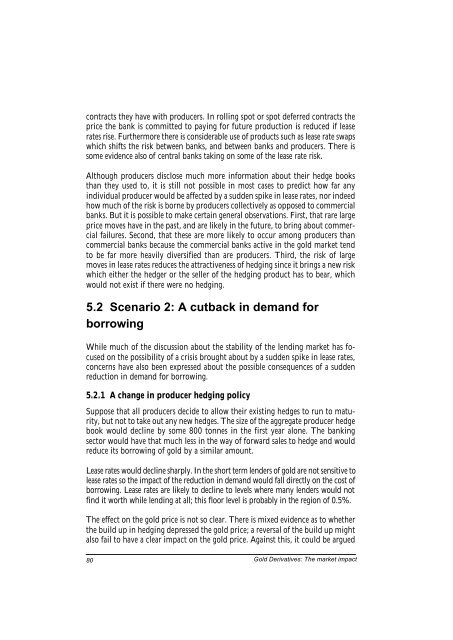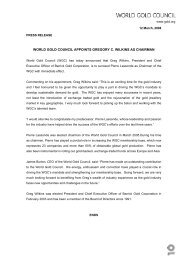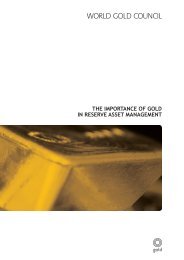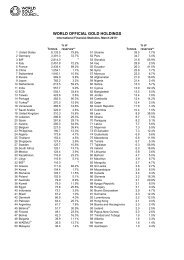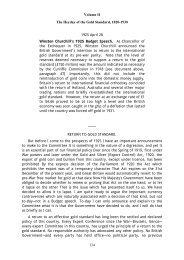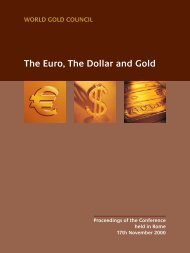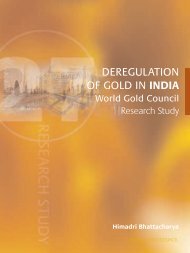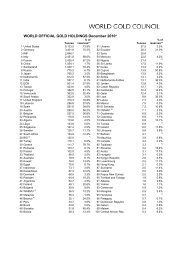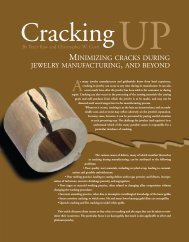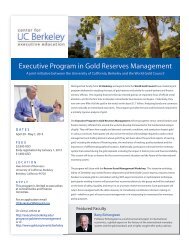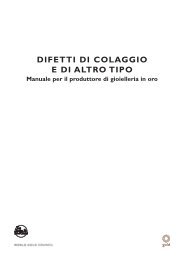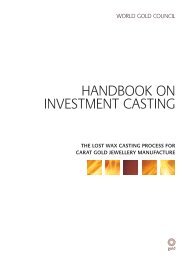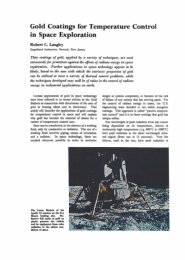Gold Derivatives: Gold Derivatives: - World Gold Council
Gold Derivatives: Gold Derivatives: - World Gold Council
Gold Derivatives: Gold Derivatives: - World Gold Council
You also want an ePaper? Increase the reach of your titles
YUMPU automatically turns print PDFs into web optimized ePapers that Google loves.
contracts they have with producers. In rolling spot or spot deferred contracts the<br />
price the bank is committed to paying for future production is reduced if lease<br />
rates rise. Furthermore there is considerable use of products such as lease rate swaps<br />
which shifts the risk between banks, and between banks and producers. There is<br />
some evidence also of central banks taking on some of the lease rate risk.<br />
Although producers disclose much more information about their hedge books<br />
than they used to, it is still not possible in most cases to predict how far any<br />
individual producer would be affected by a sudden spike in lease rates, nor indeed<br />
how much of the risk is borne by producers collectively as opposed to commercial<br />
banks. But it is possible to make certain general observations. First, that rare large<br />
price moves have in the past, and are likely in the future, to bring about commercial<br />
failures. Second, that these are more likely to occur among producers than<br />
commercial banks because the commercial banks active in the gold market tend<br />
to be far more heavily diversified than are producers. Third, the risk of large<br />
moves in lease rates reduces the attractiveness of hedging since it brings a new risk<br />
which either the hedger or the seller of the hedging product has to bear, which<br />
would not exist if there were no hedging.<br />
5.2 Scenario 2: A cutback in demand for<br />
borrowing<br />
While much of the discussion about the stability of the lending market has focused<br />
on the possibility of a crisis brought about by a sudden spike in lease rates,<br />
concerns have also been expressed about the possible consequences of a sudden<br />
reduction in demand for borrowing.<br />
5.2.1 A change in producer hedging policy<br />
Suppose that all producers decide to allow their existing hedges to run to maturity,<br />
but not to take out any new hedges. The size of the aggregate producer hedge<br />
book would decline by some 800 tonnes in the first year alone. The banking<br />
sector would have that much less in the way of forward sales to hedge and would<br />
reduce its borrowing of gold by a similar amount.<br />
Lease rates would decline sharply. In the short term lenders of gold are not sensitive to<br />
lease rates so the impact of the reduction in demand would fall directly on the cost of<br />
borrowing. Lease rates are likely to decline to levels where many lenders would not<br />
find it worth while lending at all; this floor level is probably in the region of 0.5%.<br />
The effect on the gold price is not so clear. There is mixed evidence as to whether<br />
the build up in hedging depressed the gold price; a reversal of the build up might<br />
also fail to have a clear impact on the gold price. Against this, it could be argued<br />
80<br />
<strong>Gold</strong> <strong>Derivatives</strong>: The market impact


